Learn how to grow beets for the best germination rate and harvest with this blog post and video. Not everyone soaks their beet seeds prior to planting, but I’m a believer, and you’ll find out why below.

Our goal is to have vegetable crops growing in our garden as close to year-round as possible. One way to do this is to plant cooler-weather crops or plants that will grow before the last frost date. We grow garlic over the winter and already have our potatoes in the ground. Plus with these cold-weather growing methods, we can be growing something almost all year long.
Planting beets starts at minute 14:28 of the video below!
Why I Love Growing Beets
Beets seem to be one of those foods that you either love or hate, kinda like oysters. I tend to not like oysters, much to the happiness of my husband because he loves oysters and that means more for him.
However, beets are a vegetable I have grown into. As a kid, I wasn’t so crazy, but I’m a newer convert as an adult.
Pickled beets are my mother’s favorite (Christmas gifts are being planted now), and I happen to enjoy them steamed with a splash of balsamic vinegar.
But perhaps our favorite ways to eat beets (even the kiddos) are my homemade chocolate beet cake, and my most recent discovery of roasted beet salad with goat cheese.

When Can I Plant Beets
Another reason I like growing beets is you can begin sowing them two to four weeks before your last frost date.
For your later fall crop of beets, you can plant them mid-summer, let them grow to full maturity, then leave them in the ground and harvest them all winter long (now that is awesomely easy food storage). Learn how to plant a fall garden here.
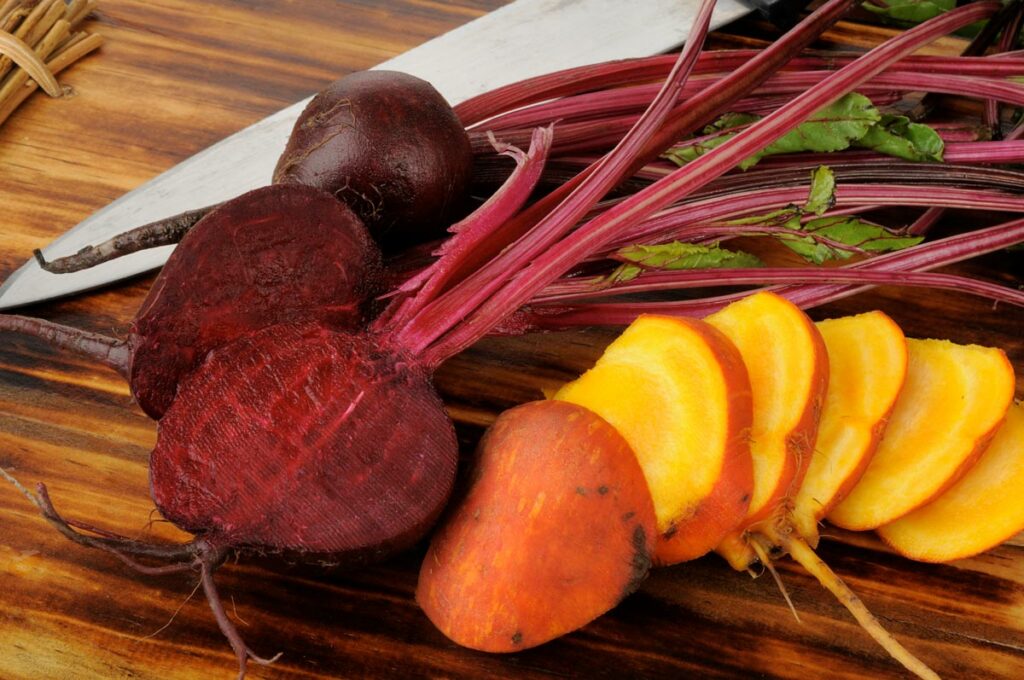
Subscribe to Melissa K. Norris!
Get updates on the latest posts and more from Melissa K. Norris straight to your inbox.
We use your personal data for interest-based advertising, as outlined in our Privacy Notice.
Beet Varieties
My recommendation when planting beets is to pick an heirloom variety. Because sugar beets are one of the largest genetically modified (GMO) crops, I only use heirloom seeds in my garden.
For more information on heirloom gardening and why it’s the only garden seed we use, you can check out this article on an intro to heirloom seeds.
There are a few different families of beets you can grow:
- Red Beets – Most people are familiar with red (or purple) beets. They’re most commonly sold at the grocery store and commonly purchased canned or pickled. These beets have that classic deep red color with an earthy flavor. Some varieties include Detroit Dark Red, Crapaudine and Crosby Egyptian.
- Golden Beets – For those who don’t think they like the flavor of beets, I recommend giving golden beets a try. They have a mild flavor and are fantastic when roasted then mashed. Some common varieties are Burpee’s Golden, Golden and Golden Detroit.
- Striped Beets – Also known as Chioggia or Bassano Beets, these are a beautiful crop that, when sliced open, have a striped interior that resembles candy. This is also why they’re often referred to as Candy Stripe or Bull’s Eye Beets.
- Cylindra Beets – These beets have more of a carrot shape than the globe shape of other varieties. They’re sometimes referred to as Formanova or Butter Slicer and have a softer texture than other beets. Most Cylindra beets grow between 6-9 inches long.
- Other Beets – There are a couple of other kinds of beets less known to the average gardener. Mangel-wurzel (or Mangold) beets were historically grown to feed livestock (they can reach 20 pounds per beet!). Finally, Sugar Beets are most often grown as a commercial crop and look similar to a turnip.

Soil pH for Growing Beets
Beets like neutral or slightly alkaline soil. If your soil is acidic like ours, your beets won’t grow well.
Simple fix, add some lime or wood ash. Because the rest of our garden plants prefer slightly acidic soil, we only added the lime to the area we were planting beets.
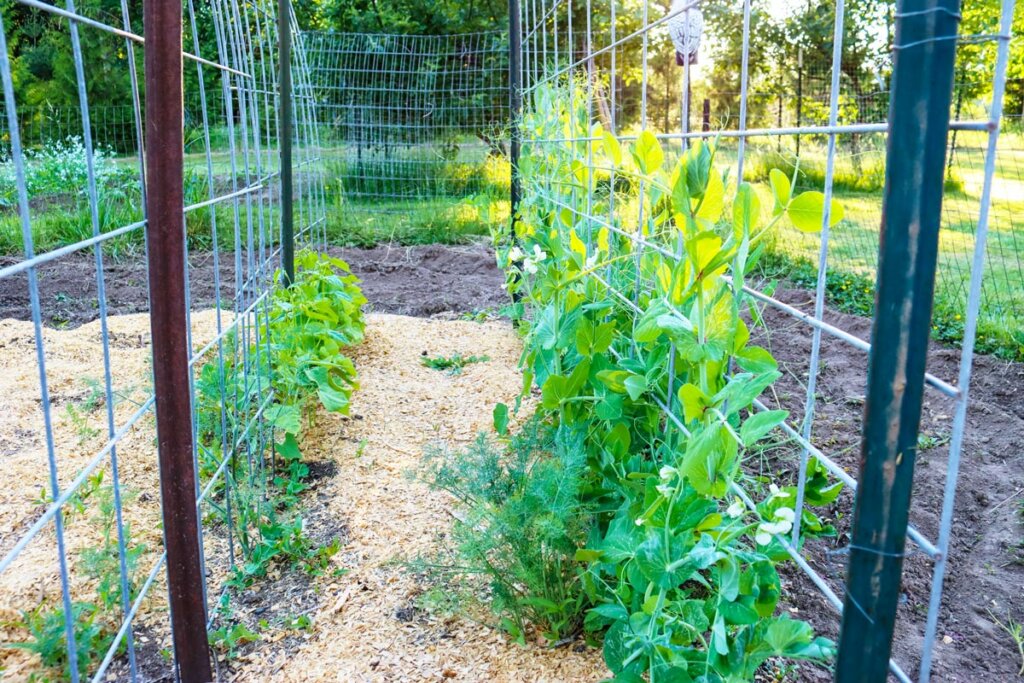
Crop Rotation
You should always rotate your crops in your garden. My book The Family Garden Plan goes into detail about the why and how. But it’s important to understand that planting your crops in the same spot every year depletes your soil and can evolve into disease and crop failure.
Beets are relatively heavy feeders, so don’t plant them where you had other heavy feeders last year, like broccoli. You also don’t want your soil to have too much nitrogen, or your beets will grow beautiful greens, but the root underneath won’t develop as well.
Because corn is a heavy nitrogen feeder, we planted our beets where our corn was last year. And next year, we’ll plant our pole beans where the beets are this year to add nitrogen back into the soil.
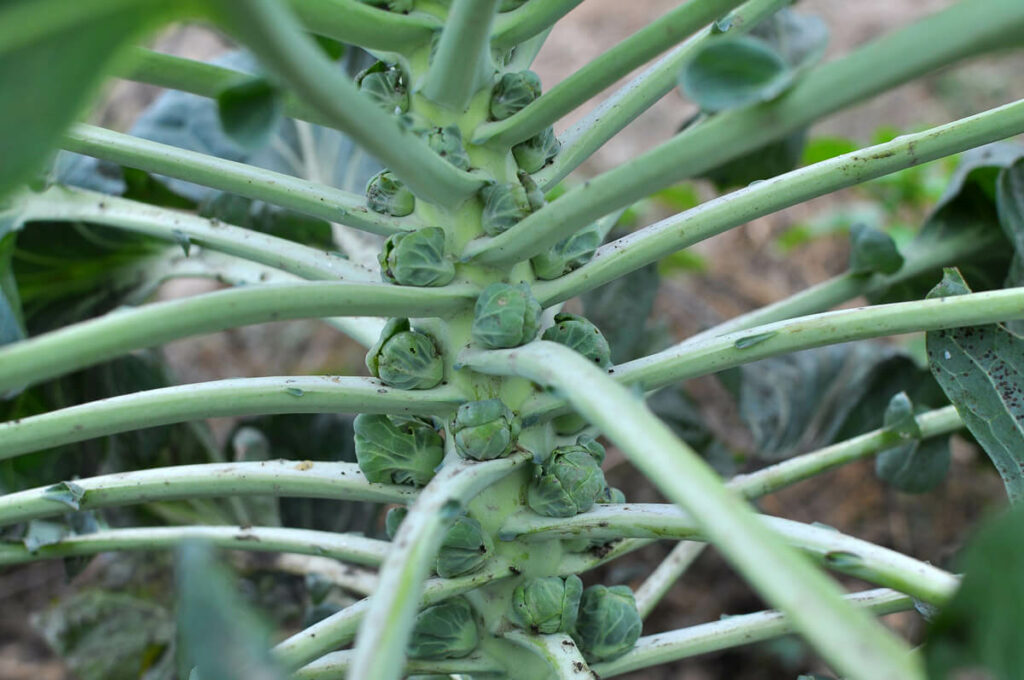
Companion Planting
Just like knowing how to rotate crops, you also need to know what not to plant next to your crops.
Beets don’t get along with pole beans (the two varieties we grow), nor do they like mustard greens. But they do play nice with bush beans, onions, and brassicas. (I feel like a gardening show when I say brassicas, but it’s just a way of saying cabbage, brussel sprouts, cauliflower, and broccoli in one word.)
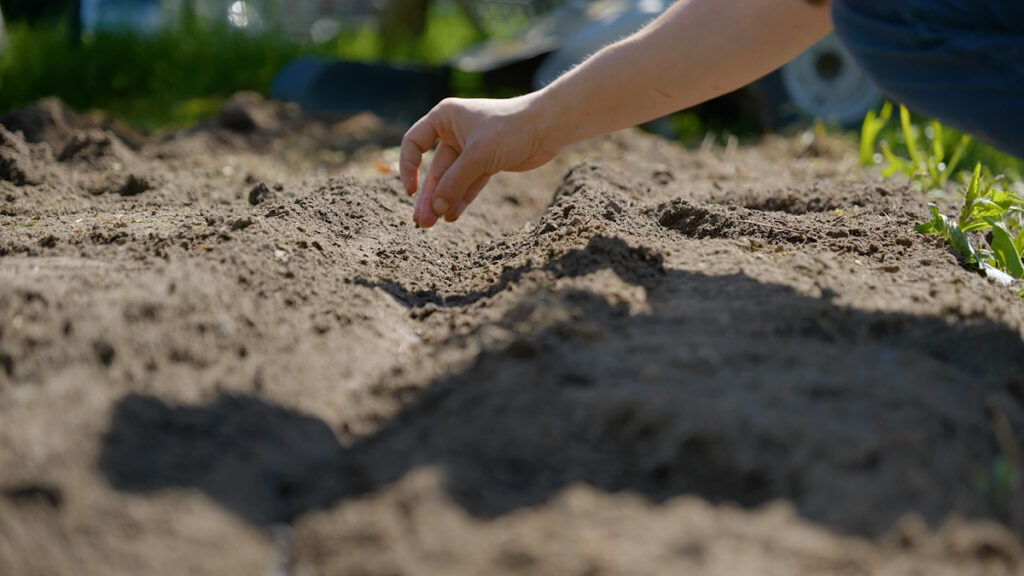
Where to Plant Beets
Though beets prefer cooler soil temps, they do still need six to eight hours of sunlight each day. Choose a nice sunny area with well-draining soil. Ideally, if that space gets some good morning sunlight with shade in the afternoon, your beets will be happier.
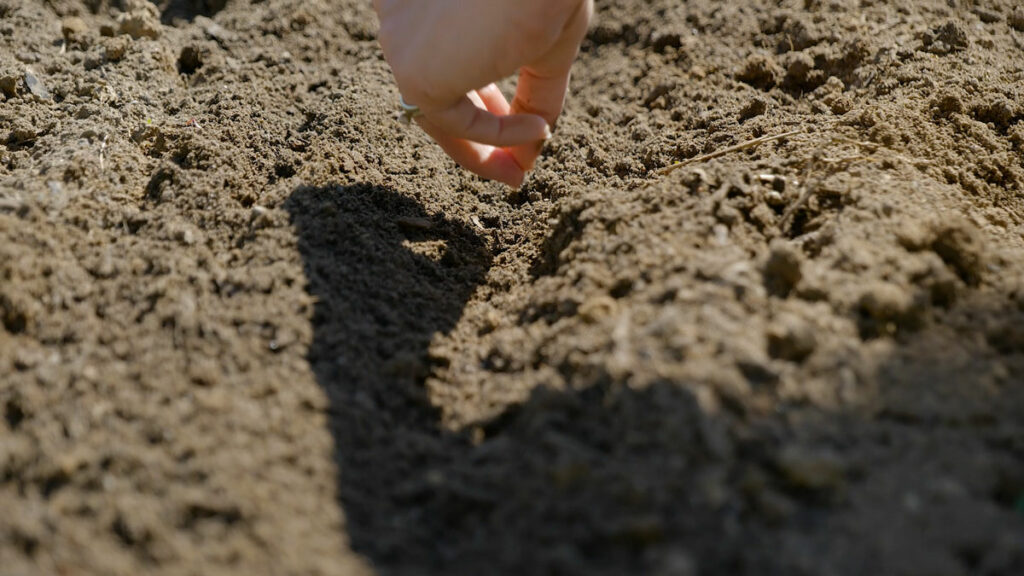
How to Plant Beets
In many cases, we like to try and get a headstart on our crops by starting seeds indoors. However, beets do not like to be transplanted. Direct sow your beets two to four weeks before your last frost date.
To avoid a harvest all at once, you can sow more beets every twenty days up until a month before your first frost date for a fall harvest.
Pro Tip: beets usually won’t germinate if the soil is too hot or above 75 degrees.
To Plant Beets:
- Using a garden hoe, a shovel or even your hand, dig a trench about 1/2 inch deep.
- Space beet seeds 4 to 6 inches apart in full sun.
- If dry in your area, soak the beet seeds overnight in a bowl of room-temperature water. If rain is in the forecast, just plant in the garden.
- Keep soil moist but not soaked.

Caring for Beets
Once your plants have been planted, beets are fairly easy to care for. However, there are a couple of things to keep in mind.
- Thin your beets. Because beet seeds are little capsules with multiple seeds inside, you must thin the beets to a single plant as they begin to grow. Pro Tip: Beet greens (leaves of the beet plant) make a wonderful addition to salads.
- When thinning your beets, pick the healthiest or largest beet plant in each area to keep. Lightly hold onto it as you pull the other beets out around it to avoid dislodging it. Some people even use small sheers to snip the surrounding beets so as not to disturb the roots.
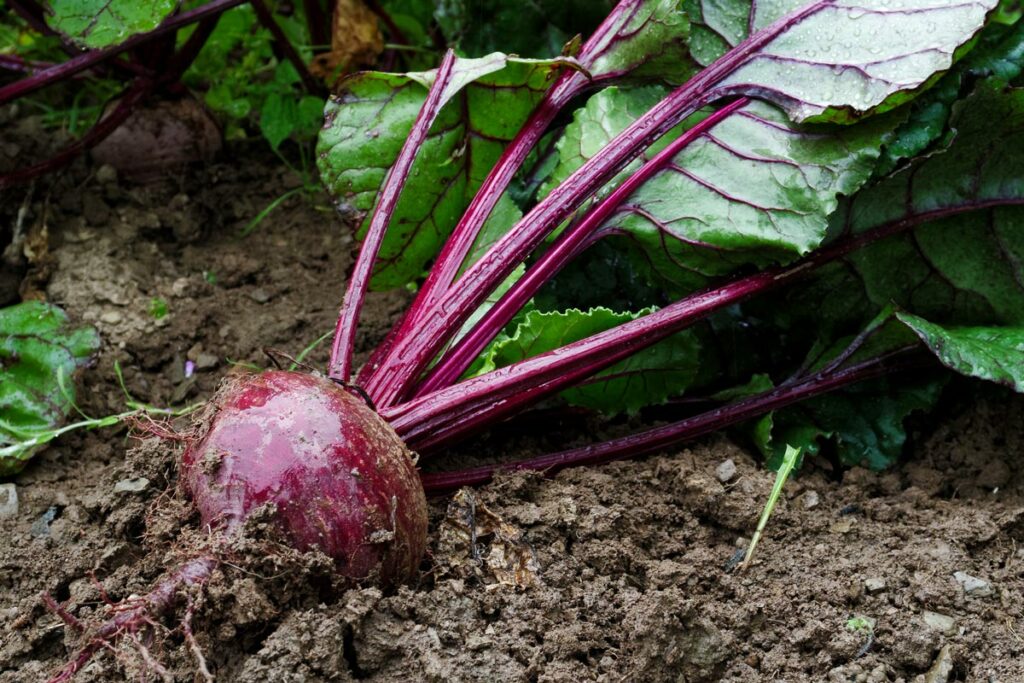
When to Harvest Beets
You can begin harvesting your beets at any time. Tiny beets can be eaten as microgreens. Radish-sized beets are more tender, or full-size beets are great for turning into pickled beets and other delicious treats like chocolate beet cake.

Preserving Beets
Be sure to grab my book, Everything Worth Preserving for all the ways to safely (and deliciously) preserve beets for the whole year.
So, are you a beet lover or hater? How about oysters? Any tips to add to growing beets?

More Posts You May Enjoy
- 10 Tips for Growing Your Own Food
- How Much to Plant Per Person
- How to Plant and Grow Potatoes (In Containers or the Ground)
- How to Grow Mushrooms at Home
- How to Plant Garlic (Fall Garlic Planting)
- How to Grow Tomatoes
- How to Plant Strawberries- 5 Tips to Success
- How to Grow (and When to Pick) Pole Beans
- How to Grow Swiss Chard in your Fall Garden
- Growing Onions From Seed
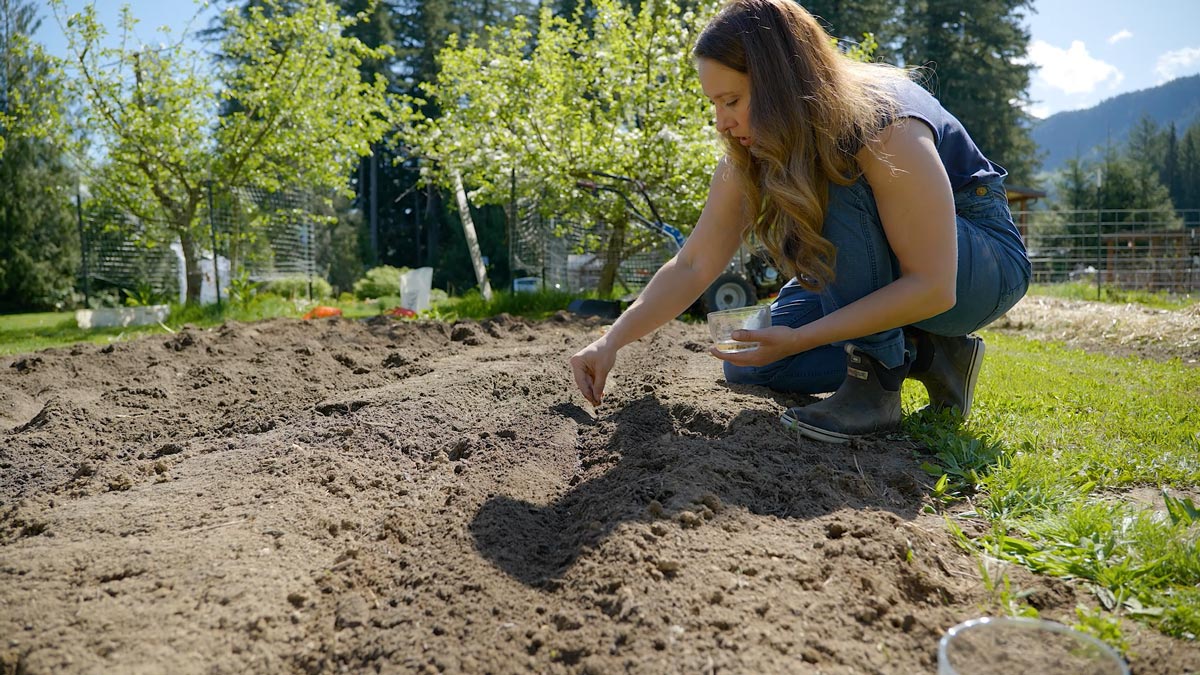
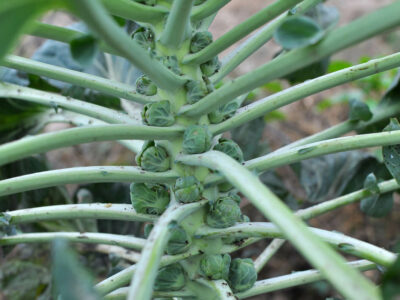
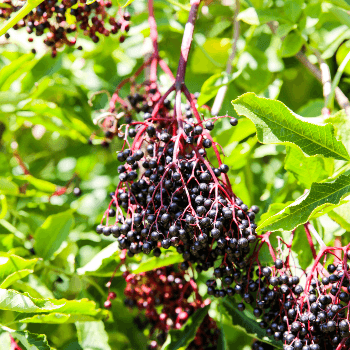
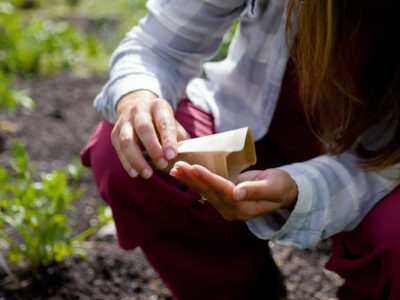
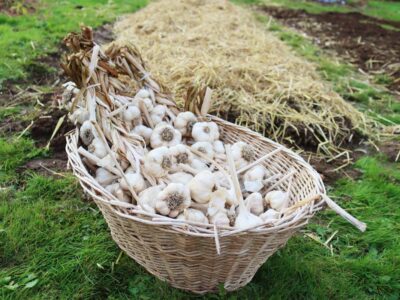






Since I have recently “discovered” your website I am browsing through a wealth of information (and making notes).
I am growing beets for the first time this year. Thank you for all the tips, like the crops they don’t like! And I didn’t know you can plant them all year round and keep them in the ground for easy food storage (rather new-ish to gardening too).
Something I’ve read and what I am trying out is that you can plant radishes with your beets as a companion crops. By the time the radishes are ready to be harvested, the beets are starting to grow and pulling the radishes out of the ground gives the beets the room and looser soil to expand. Not sure if this is true, but going to see 🙂
Thanks for sharing your tips on the radishes with beets. I haven’t tried that one. 🙂
For those who really don’t like the flavor so much, but don’t want to miss out on the amazing nutrition of beets, slice them very thin, dehydrate them (in a dehydrator or oven) till crisp, grind them to powder in a blender, then add the powder to soups, stews, etc.
I’ve had great luck growing my beets in bins. It’s great to control the acidity. I seed them in a shadey area and move them to a sunny location. So far so good. Thanks for your informative post. I tried to add a picture of my crop, but couldn’t. Next time.
[…] Soak beet seeds overnight before planting in August. Learn how to grow and plant beets here. […]
[…] 2. Beets. Beets are something I developed a taste for as an adult. But they’re like carrots, you can keep them in the ground or store them in the root cellar. They’re super yummy pickled, roasted with garlic, or in my Chocolate Gluten-Free cake. I might have a thing for vegetables and dessert. Here’s our complete tutorial on how to plant and grow beets. […]
<3 Love Beets !! Hate oysters 😛 !! yuk… Thanks for the info on beets this is the first year I have tried growing them. I love them fresh, raw, pickled, or ovenroasted either alone or with other root crops (carrots , taters, sweet taters and the like 🙂 )
[…] How to Plant and Grow Beets […]
I planted beets last year for the first year and they didn’t come up, at all, so I planted them again, still the same. The third try, I got 6 beets. This year, I planted them again, about May4th. I still am not seeing them come up! My neighbor’s are doing fine! I have wood ash in my soil, why can’t I grow beets? Do I need more ash or something else? I’m getting very unhappy with beets! I love them, any way I can get them!
raid your neighbor’s garden?
Beets are so good for us….and some of my kids LOVE them…. fresh or out of the can…. others….NO. 🙂 I planted my first beets about 2 weeks ago…. I love using the thinned beets to add to salads…. I just wash the whole plant that was thinned and cut it up…..adds color and nutrients. What a great amount of information in your post… I learned a few things that I plan to use. ….. By the way, I LOVE the idea of Beet Chocolate Cake and Beet Brownies….What a great idea! Thank you for this post. 🙂
Thanks for visiting. I’m glad you liked the idea of the beets in desserts, it’s amazing what they do for the texture and pretty natural red velvet color. I can’t wait for our beets to be big enough to harvest and to start adding to our salads as well. I tend to crave fresh greens in the spring from our own garden, they just taste better than the stores. 🙂
We love beets here and I’ve grown them for years without problem, but the past three years have been a bust. I think it must be the ph now that I’ve read your tips. Gonna try it again this year thanks!
I’m glad the tips helped. Would love to hear how your crop turns out this year.